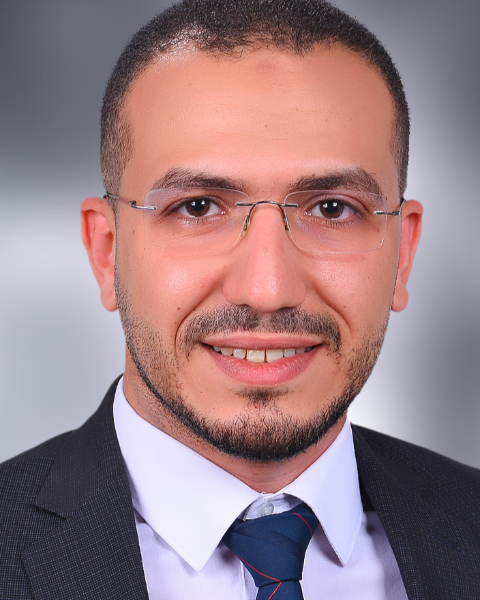PQA 01 - PQA 01 Lung Cancer/Thoracic Malignancies and Diversity, Equity and Inclusion in Healthcare Poster Q&A
2107 - Understanding the Landscape of Radiation Therapy in Alexandria, Egypt: A Comprehensive Study on Physicians, Supporting Staff and Patients Perspectives
Sunday, September 29, 2024
2:45 PM - 4:15 PM ET
Location: Hall C
Screen: 3

Ahmed Nawwar, MD, MPH
Harvard Medical College/Brigham and Women's Hospital/Dana Farbar Cancer Institute
Boston, MA
Presenter(s)
A. E. Nawwar1, Y. Abouelnagah2, M. Abdelhalim2, C. Mansour2, S. Motawee2, N. Warda2, W. O. Arafat3, T. Refaat4, and S. Grover5; 1Harvard T. H. Chan School of Public Health, Boston, MA, 2Faculty of Medicine Alexandria University, Alexandria, Egypt, 3Alexandria comprehensive cancer center, Alexandria, alexandria, Egypt, 4Department of Radiation Oncology, Stritch School of Medicine, Loyola University Chicago, Maywood, IL, 5Lumonus, Sydney, Australia
Purpose/Objective(s): In Egypt, cancer is a significant and escalating public health challenge. In 2019, 324,949 patients with malignant neoplasms were being treated in Egypt at the states’ expense. Despite having around one quarter of the radiation therapy machines in Africa, there is a massive gap in terms of access and distribution of radiation services and questionable quality of the available machines. This study aims to delve into the experiences and challenges faced by physicians, supporting staff, and patients in Alexandria’s radiation oncology departments, a representative of the healthcare system in Egypt. The insights gained will be instrumental in shaping interventions and policies that enhance the quality of cancer care and the well-being of patients and healthcare providers alike, with implications that resonate beyond the local context. Materials/
Methods: A qualitative design, engaging in-depth interviews with a purposive sample of 10 physicians, 5 physicists, and 20 patients were selected to participate in semi-structured interviews. Subjects were randomly selected to represent four out of the five centers that provide radiation therapy in Alexandria. The qualitative responses were explored thematically using qualitative data analysis software by two different researchers.
Results: The qualitative interviews revealed three critical concerns within the radiation therapy landscape of Alexandria. Physicians reported a scarcity of treatment machines, which not only extended patient waiting times but also limited hands-on training opportunities for future practitioners, potentially affecting the quality of future care. Physicists expressed frustrations over the lack of training opportunities, which impedes their professional development and the advancement of treatment precision. From the patients perspective, the most pressing issues were the prolonged waiting periods for treatment, which often led to a deterioration in their health status. Additionally, patients highlighted a lack of clear communication regarding treatment options, leading to uninformed decision-making and consent. Accessibility to treatment facilities was another significant challenge, exacerbating the emotional and physical toll on patients seeking radiation therapy.
Conclusion: The study underscores a pronounced gap between the available resources and the needs of physicians, physicists, and patients in Alexandrias radiation therapy sector. Addressing these concerns requires a multi-faceted approach, including investment in healthcare infrastructure, enhanced training programs for professionals, and patient-centered communication and support systems.
Purpose/Objective(s): In Egypt, cancer is a significant and escalating public health challenge. In 2019, 324,949 patients with malignant neoplasms were being treated in Egypt at the states’ expense. Despite having around one quarter of the radiation therapy machines in Africa, there is a massive gap in terms of access and distribution of radiation services and questionable quality of the available machines. This study aims to delve into the experiences and challenges faced by physicians, supporting staff, and patients in Alexandria’s radiation oncology departments, a representative of the healthcare system in Egypt. The insights gained will be instrumental in shaping interventions and policies that enhance the quality of cancer care and the well-being of patients and healthcare providers alike, with implications that resonate beyond the local context. Materials/
Methods: A qualitative design, engaging in-depth interviews with a purposive sample of 10 physicians, 5 physicists, and 20 patients were selected to participate in semi-structured interviews. Subjects were randomly selected to represent four out of the five centers that provide radiation therapy in Alexandria. The qualitative responses were explored thematically using qualitative data analysis software by two different researchers.
Results: The qualitative interviews revealed three critical concerns within the radiation therapy landscape of Alexandria. Physicians reported a scarcity of treatment machines, which not only extended patient waiting times but also limited hands-on training opportunities for future practitioners, potentially affecting the quality of future care. Physicists expressed frustrations over the lack of training opportunities, which impedes their professional development and the advancement of treatment precision. From the patients perspective, the most pressing issues were the prolonged waiting periods for treatment, which often led to a deterioration in their health status. Additionally, patients highlighted a lack of clear communication regarding treatment options, leading to uninformed decision-making and consent. Accessibility to treatment facilities was another significant challenge, exacerbating the emotional and physical toll on patients seeking radiation therapy.
Conclusion: The study underscores a pronounced gap between the available resources and the needs of physicians, physicists, and patients in Alexandrias radiation therapy sector. Addressing these concerns requires a multi-faceted approach, including investment in healthcare infrastructure, enhanced training programs for professionals, and patient-centered communication and support systems.
